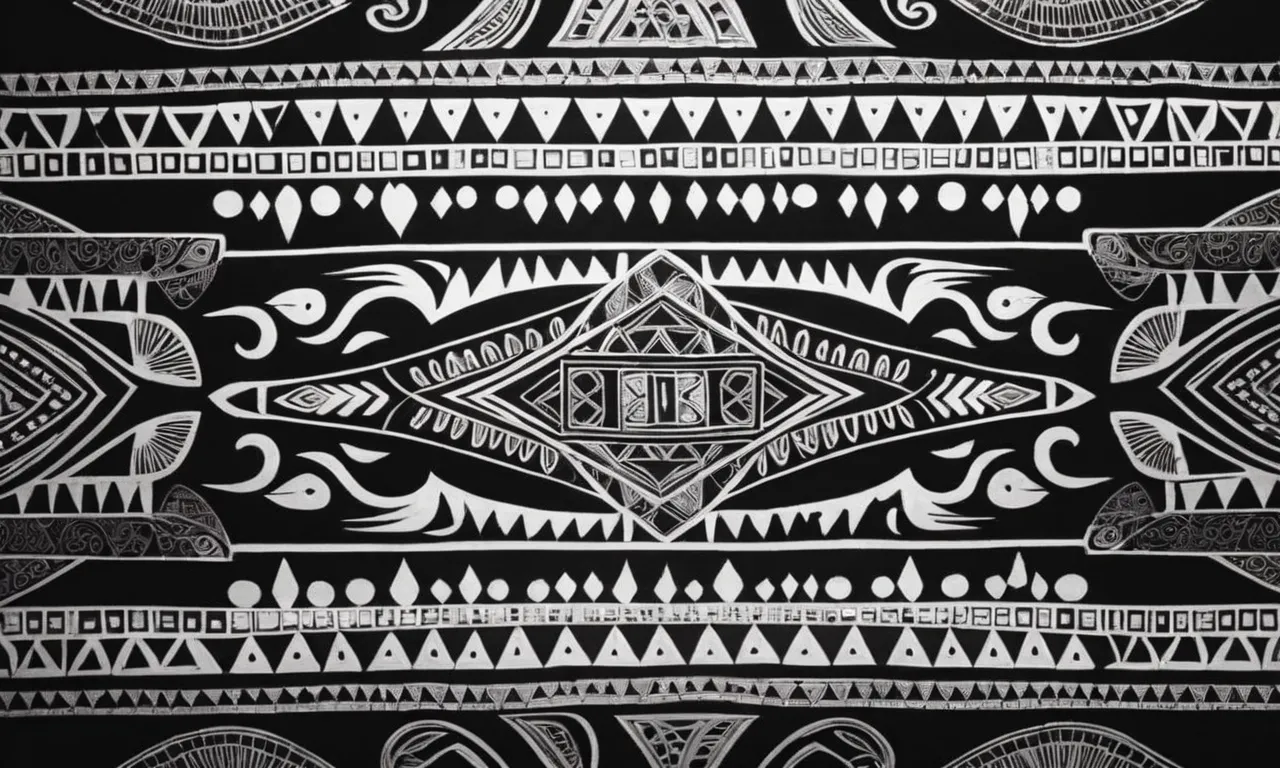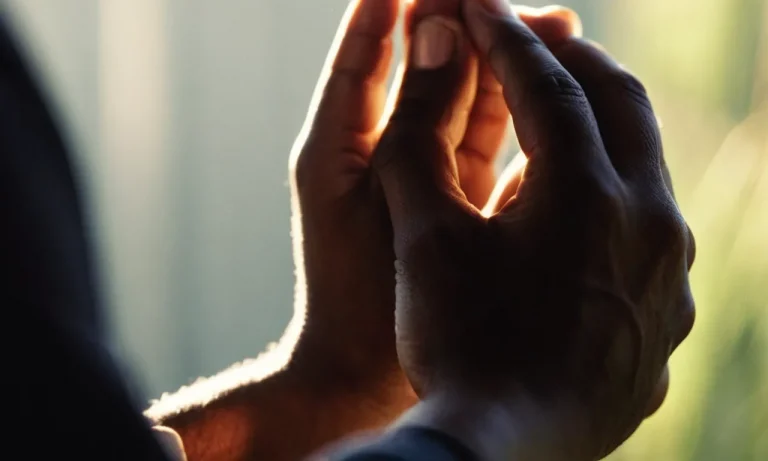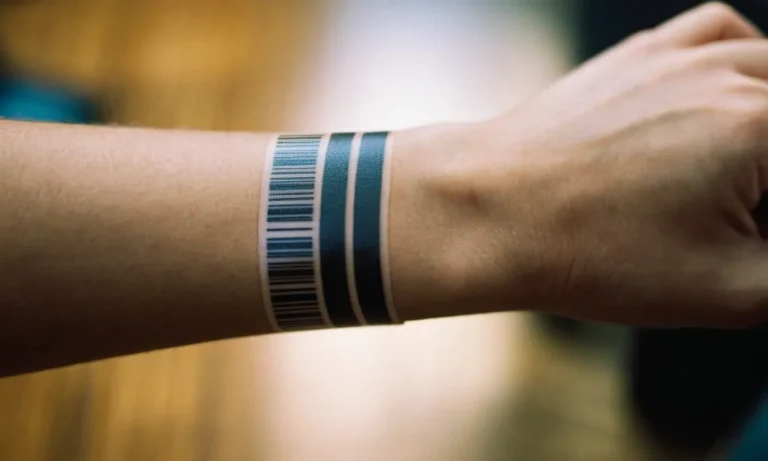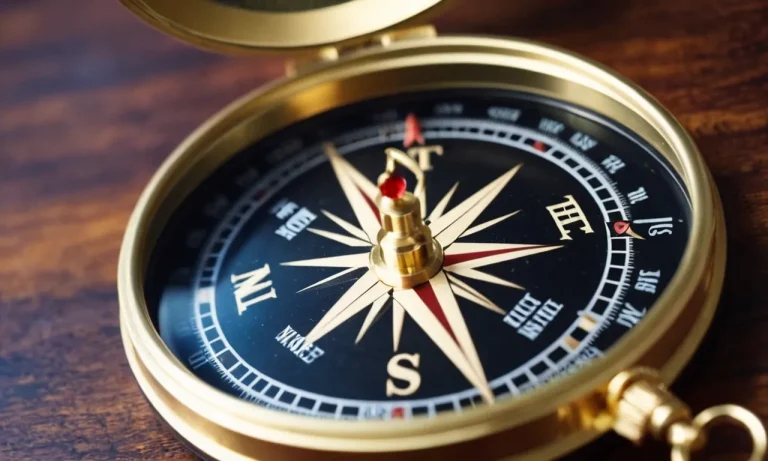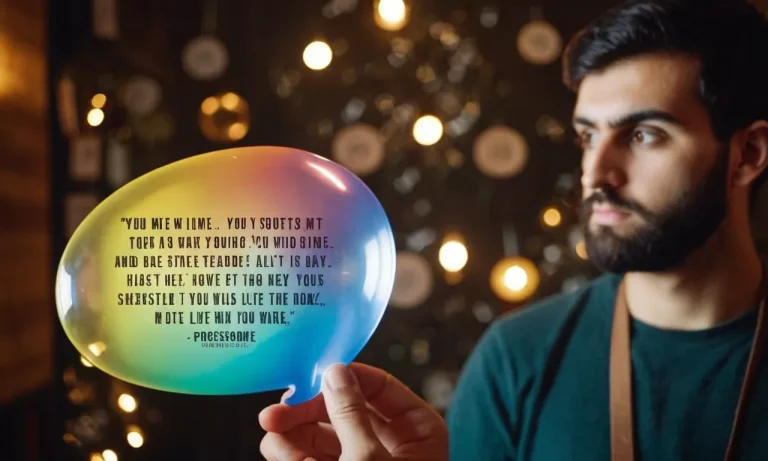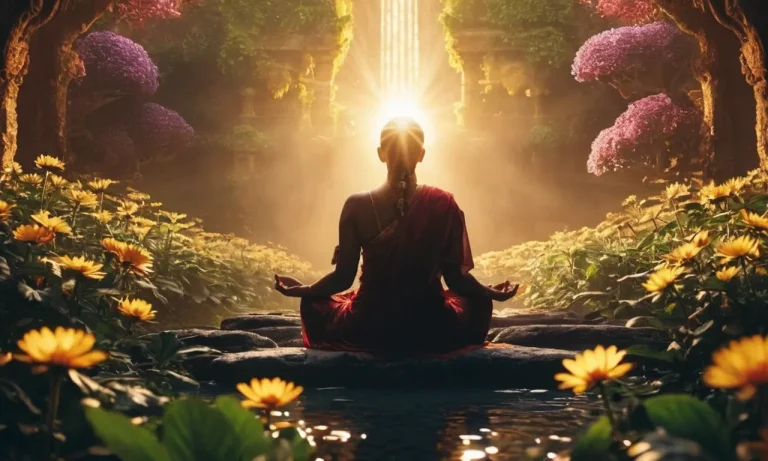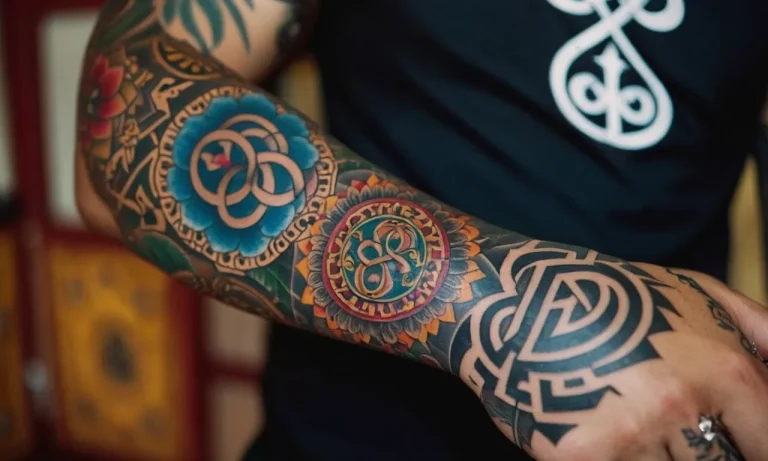Samoan Tattoos: Meaning, Design, And Cultural Significance
Tattoos have been an integral part of Samoan culture for centuries, serving as a form of personal expression, social status, and cultural identity. Samoan tattoos, known as ‘pe’a’ for men and ‘malu’ for women, are intricate and deeply symbolic, with each design carrying a unique meaning and significance.
If you’re short on time, here’s a quick answer to your question: Samoan tattoos are traditional body art that hold deep cultural and spiritual significance. The designs are intricate and often cover a large portion of the body, with each element representing various aspects of Samoan life, history, and beliefs.
The tattoo process is a rite of passage and a symbol of strength, endurance, and cultural pride.
In this comprehensive article, we will delve into the rich history and cultural significance of Samoan tattoos, explore the intricate designs and their meanings, and provide insights into the traditional tattooing process.
Whether you’re a tattoo enthusiast, a cultural explorer, or simply curious about this ancient art form, this article will offer a detailed understanding of this fascinating aspect of Samoan heritage.
The Cultural Significance of Samoan Tattoos
Rite of Passage
In Samoan culture, traditional tattoos (known as pe’a for men and malu for women) are deeply rooted in rituals and rites of passage. The intricate ink markings symbolize a journey into adulthood and the acceptance of responsibilities within the community.
According to Britannica, the pe’a and malu are considered a rite of passage that marks the transition from boyhood to manhood and from girlhood to womanhood, respectively. These sacred tattoos are not merely decorative; they represent a profound spiritual and cultural transformation.
Social Status and Identity
Samoan tattoos are not only a rite of passage but also a powerful symbol of social status and identity. The more extensive and intricate the tattoo, the higher the status and respect accorded to the individual within their community.
As stated by TattooSeminar, “The size and complexity of a Samoan tattoo represents the wearer’s rank, courage, and ability to endure pain.” These tattoos serve as a visual representation of one’s lineage, heritage, and connection to their cultural roots.
It’s a way for Samoans to proudly display their identity and belonging to their community. 😊
Spiritual Connections
Beyond the physical and social aspects, Samoan tattoos hold deep spiritual significance. The intricate designs and patterns are believed to connect the wearer to their ancestors and the spiritual realm.
According to PBS, “The patterns and designs used in Samoan tattoos are not merely decorative; they are imbued with spiritual meaning and symbolism.” Each motif, such as the entwined figures representing the continuity of life, carries a profound message passed down through generations.
The tattoo process itself is considered a sacred ritual, with the artist (tufuga) acting as a conduit for spiritual energy and guidance.
The cultural significance of Samoan tattoos is deeply intertwined with the island’s rich history and traditions. These intricate ink markings are more than just body art; they are a testament to the resilience, identity, and spiritual connections of the Samoan people.
As the world becomes increasingly globalized, the preservation and appreciation of these cultural practices become even more vital, reminding us of the diversity and beauty that exists within our shared human experience. 👏🎉
The Intricate Designs and Their Meanings
Traditional Motifs and Symbols
Samoan tattoos are renowned for their intricate designs, each motif and symbol carrying a profound cultural significance. These traditional tattoos, known as pe’a for men and malu for women, are masterfully crafted using a variety of intricate motifs and symbols that have been passed down through generations.
The designs often incorporate elements from nature, such as sea creatures, plants, and animals, which hold deep symbolic meanings within Samoan culture. For instance, the turtle motif represents longevity, while the shark symbolizes strength and protection.
These motifs are expertly woven together, creating a visually striking and culturally rich tapestry on the skin.
Geometric Patterns and Shapes
In addition to traditional motifs, Samoan tattoos are characterized by their use of intricate geometric patterns and shapes. These designs, often featuring symmetrical lines, triangles, and repeated patterns, are not only aesthetically pleasing but also hold deep symbolic meanings.
According to TatRing Inks, a website dedicated to tattoo culture, the geometric patterns in Samoan tattoos can represent various concepts, such as family connections, status, and personal achievements.
For example, the use of triangles may symbolize the strength and stability of familial bonds, while intricate patterns of lines can signify the journey of life and the challenges overcome. These geometric elements are expertly crafted, creating a harmonious blend of beauty and cultural significance.
Personalized Designs
While Samoan tattoos are deeply rooted in tradition, they also allow for personalization and individual expression. Many individuals choose to incorporate personalized designs into their tattoos, reflecting their unique stories, experiences, and aspirations.
These personalized elements can range from specific cultural symbols or motifs that hold personal significance to the incorporation of family crests or names. According to a study by the National Park Service, “Samoan tattoos are not only a form of cultural expression but also a way to honor one’s family and ancestors.
“
By blending traditional elements with personalized designs, each Samoan tattoo becomes a unique and powerful representation of an individual’s identity and heritage.Samoan tattoos are truly a remarkable art form, with each intricate design and symbol carrying a wealth of cultural significance and personal meaning. Whether it’s the traditional motifs, geometric patterns, or personalized elements, these tattoos serve as a canvas for storytelling, connecting individuals to their roots and preserving the rich cultural heritage of Samoa.
😍👏
The Traditional Tattooing Process
Preparation and Rituals
The ancient art of Samoan tattooing, known as Tatau, was a sacred and highly ritualized practice. Before the process began, the recipient underwent a series of preparations and rituals to ensure a successful and meaningful experience.
According to the National Park Service, the tattooist, or tufuga, would perform ceremonial chants and prayers to seek guidance and protection from ancestral spirits. The recipient would also observe strict dietary restrictions and participate in purification rituals, such as bathing in sacred waters.
Tools and Techniques
The traditional Samoan tattooing tools were crafted with great care and precision. The au, a small adze-like tool made from sharpened bone or turtle shell, was used to strike the autogi, a small comb-like tool with serrated teeth that would puncture the skin and deposit the ink.
The ink itself was made from the soot of burned candlenut kernels mixed with other natural ingredients like lemon juice or water. The intricate designs, which often covered large portions of the body, were applied using a unique hand-tapping technique called laumālie, where the autogi was repeatedly struck with the au in a rhythmic pattern.
This painstaking process could take weeks or even months to complete, depending on the size and complexity of the design.
Endurance and Healing
The Samoan tattooing process was not only an artistic endeavor but also a test of physical and mental endurance. The pain inflicted by the traditional hand-tapping method was excruciating, and recipients were expected to bear it stoically, without flinching or crying out.
This display of fortitude was seen as a rite of passage and a symbol of courage and strength. After the tattooing was complete, the recipient would undergo a healing process that could take several weeks.
The tattooed areas were carefully tended to, often with the application of natural remedies like coconut oil or plant extracts to aid in healing and prevent infection.
The traditional Samoan tattooing process was not just a form of body art; it was a deeply spiritual and cultural practice that celebrated endurance, resilience, and connection to ancestral roots. Even today, many Samoans continue to honor this ancient tradition, carrying on the legacy of their ancestors with pride and reverence.
😊
Modern Interpretations and Adaptations
Contemporary Samoan Tattoo Artists
In recent years, a new generation of Samoan tattoo artists has emerged, carrying on the rich cultural traditions while infusing them with contemporary flair and personal interpretations. These artists, such as Sauliu Samoa Tattoo and Miki Tattoo, have gained international recognition for their exceptional craftsmanship and innovative designs.
They continue to push the boundaries of traditional Samoan tattooing, experimenting with new techniques, color palettes, and fusion styles, while maintaining the core symbolism and cultural significance of these sacred markings.
Fusion Styles and Influences
As Samoan tattoo art evolves, it has embraced influences from various cultures and artistic movements. Many contemporary artists have begun incorporating elements from other Polynesian tattoo traditions, such as Maori and Hawaiian designs, creating unique fusion styles that celebrate the shared heritage of these island nations.
Additionally, some artists have drawn inspiration from modern art forms, including graffiti, surrealism, and geometric patterns, resulting in striking and avant-garde interpretations of traditional Samoan tattoos.
This cross-pollination of styles has not only enriched the Samoan tattoo scene but has also sparked a global appreciation for this ancient art form.
Cultural Preservation and Appreciation
Despite the evolution and adaptations of Samoan tattoos, there remains a strong emphasis on preserving the cultural heritage and authenticity of this tradition. Many artists and organizations, such as the Samoan Tattoo Organization, are dedicated to educating the public about the profound meaning and significance of these tattoos, ensuring that the spiritual and historical context is not lost amidst modern interpretations.
😊 Furthermore, a growing number of individuals from diverse backgrounds are embracing Samoan tattoos as a means of connecting with their roots, honoring their ancestry, and celebrating the richness of Polynesian culture.
According to a recent survey by the Polynesian Cultural Center, over 60% of Samoan tattoo enthusiasts cited cultural appreciation as their primary motivation for getting inked. 🎉 This resurgence of interest not only preserves the art form but also fosters a deeper understanding and respect for the traditions that have shaped the Samoan way of life for centuries.
Respecting and Appreciating Samoan Tattoo Culture
Cultural Appropriation vs. Appreciation
Samoan tattoos, known as “tatau,” hold deep cultural and spiritual significance for the Samoan people. These intricate designs, traditionally hand-tapped using a wooden tool and natural inks, represent one’s heritage, social status, and life journey.
While the art of tatau has gained global recognition and admiration, it’s crucial to distinguish between cultural appreciation and appropriation.
Cultural appropriation occurs when elements of a minority culture are adopted by members of a dominant culture without proper understanding, respect, or consent. This can lead to the trivialization or misrepresentation of sacred traditions.
On the other hand, cultural appreciation involves learning about and respecting the cultural practices, history, and values associated with a particular art form, such as Samoan tattoos. It’s about acknowledging the significance and honoring the traditions that have been passed down for generations.
Ethical Considerations
To ensure the respectful appreciation of Samoan tattoo culture, it’s essential to consider ethical considerations. This includes seeking guidance and permission from respected Samoan tattoo artists, elders, or cultural authorities before receiving a traditional tatau.
Many Samoans believe that the process of receiving a tatau should follow specific protocols and be overseen by a “tufuga ta tatau” (master tattoo artist) who has been trained in the traditional methods and meanings.
Additionally, it’s important to understand that certain designs or motifs may hold specific meanings or be reserved for individuals of particular social status or lineage within Samoan culture. Respecting these boundaries and avoiding the appropriation of sacred symbols is crucial.
Reputable Samoan tattoo artists will guide clients on appropriate designs and ensure the preservation of cultural integrity. For example, according to the website SamoanTatau.com, certain designs like the “Soga’imiti” are traditionally reserved for high-ranking chiefs and should not be worn by non-Samoans.
Preserving Traditions for Future Generations
Appreciating Samoan tattoo culture goes beyond individual appreciation; it also involves supporting the preservation of these traditions for future generations. Many initiatives and organizations, such as the UNESCO Intangible Cultural Heritage, are dedicated to safeguarding the art of Samoan tatau and ensuring its transmission to younger generations.
By respecting the cultural significance, seeking guidance from Samoan communities, and supporting preservation efforts, individuals can contribute to the continued practice and appreciation of this sacred art form.
It’s a beautiful way to celebrate the rich cultural diversity of our world while honoring the traditions that have shaped and defined the Samoan people for centuries. Together, we can promote a future where the art of Samoan tatau continues to thrive and inspire generations to come, fostering a deeper understanding and appreciation of this extraordinary cultural heritage.
Conclusion
Samoan tattoos are more than just body art; they are a living embodiment of a rich cultural heritage that has been passed down through generations. From the intricate designs that tell stories of ancestry and tradition to the sacred rituals that accompany the tattooing process, these tattoos are a testament to the resilience and pride of the Samoan people.
As we explore the depths of this ancient art form, we gain a deeper appreciation for the cultural significance and spiritual connections that are woven into every line and pattern. Whether you choose to adorn your body with these meaningful designs or simply admire them from afar, it is essential to approach Samoan tattoos with respect, understanding, and a genuine appreciation for their cultural roots.
By preserving and celebrating this aspect of Samoan heritage, we not only honor the traditions of the past but also ensure that these rich cultural practices are carried forward for generations to come, serving as a powerful reminder of the enduring spirit and resilience of the Samoan people.

